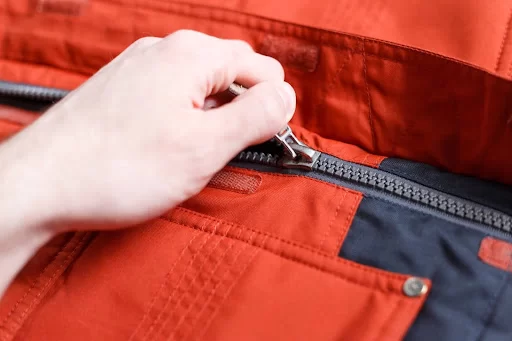Ensuring the quality and reliability of zippers is vital for any business involved in manufacturing products that use zippers, such as clothing, bags, outdoor gear, and automotive accessories. Zippers are inherent in these items and their effectiveness determines the general performance and the usability of the products. A zipper that does not work well can compromise the functionality of the garment or accessory and therefore customers will not be satisfied or may have to make other purchases. Hence, it is imperative for zipper suppliers to prioritise the quality and reliability of the zippers they use.
One way to ensure such qualities is through zipper fatigue testing. This specialised testing procedure applies a series of demanding and consecutive motions of opening and closing the zippers, which replicate the actual usage environment of these items. Thus, specific industries, including manufacturers, can define certain critical weak zones and comprehend how a zipper will perform in the long term. Zipper fatigue testing not only helps in assessing the current quality of the zippers but also provides valuable insights for making necessary improvements in design and materials.

This article also pays much attention to explaining the concept of zipper fatigue testing. It will also describe how this testing is done, which parameters are being observed during testing like force, speed, angle of operation among others. Also, the article will describe the significance of zipper fatigue testing in improving the product life and quality. By understanding and implementing robust testing protocols, businesses, including those sourcing from a zipper supplier in Singapore, can ensure their products meet the high standards expected by consumers, ultimately leading to increased customer satisfaction and brand loyalty.
Zippers are always a part of most products and are considered basic in functionality; so, if they fail, consumers will be dissatisfied. Here are some reasons why ensuring zipper quality is essential, Here are some reasons why ensuring zipper quality is essential:

Zipper fatigue testing involves repeatedly opening and closing a zipper to simulate real-world usage. This process helps manufacturers understand how a zipper performs under conditions of repeated use, mimicking the wear and tear experienced during its lifespan.
Testing the durability of the best zippers in Singapore ensures they can withstand the demands of everyday use. Consider scenarios like a backpack zipper failing during a hike or a jacket zipper breaking on a cold day. Such failures can be avoided through rigorous testing.
The process of zipper fatigue testing involves several steps:
The following table illustrates the typical parameters monitored during zipper fatigue testing:
| Parameter | Description |
| Force | The force required to open and close the zipper |
| Speed | The speed at which the zipper is operated |
| Angle | The angle at which the zipper is pulled |
| Number of Cycles | The total number of opening and closing cycles |
After completing the testing, manufacturers analyse the collected data to assess the zipper’s performance. Key factors evaluated include:
The insights from zipper fatigue testing guide manufacturers in improving product design. By identifying weak points, they can make adjustments to materials, construction methods, or overall design. This iterative process helps in developing zippers that are more durable and reliable.

To ensure the quality and reliability of zipper supplies, businesses should follow these key steps:
Here are some practical tips to help businesses ensure the quality and reliability of their zipper supplies:
Zipper fatigue testing is a crucial process that ensures the durability and reliability of zippers used in various products. By simulating real-world usage and subjecting zippers to repetitive cycles, manufacturers can gain valuable insights that drive product improvements. For businesses, maintaining high-quality zipper supplies is essential for customer satisfaction and product longevity. Implementing rigorous testing and partnering with a reputable zipper supplier in Singapore are key steps to achieving this goal. As consumer expectations for durable products continue to rise, ensuring zipper quality and reliability remains a fundamental aspect of manufacturing excellence.
The following table summarises the key points discussed in the article:
| Key Aspect | Description |
| Importance of Quality | Ensures customer satisfaction, product longevity, and brand reputation |
| Zipper Fatigue Testing | Involves repetitive cycles to simulate real-world usage |
| Testing Process | Mounting, cycling, and monitoring parameters |
| Data Analysis | Evaluates cycles endured, force changes, and visible wear |
| Design Improvements | Guides adjustments to materials, construction, and design |
| Steps for Businesses | Choose reputable suppliers, specify standards, conduct testing, monitor performance |
| Practical Tips | Regular audits, sample testing, quality certifications |
By following these guidelines and ensuring rigorous zipper testing, businesses can maintain high standards of quality and reliability in their products, leading to greater customer satisfaction and long-term success.